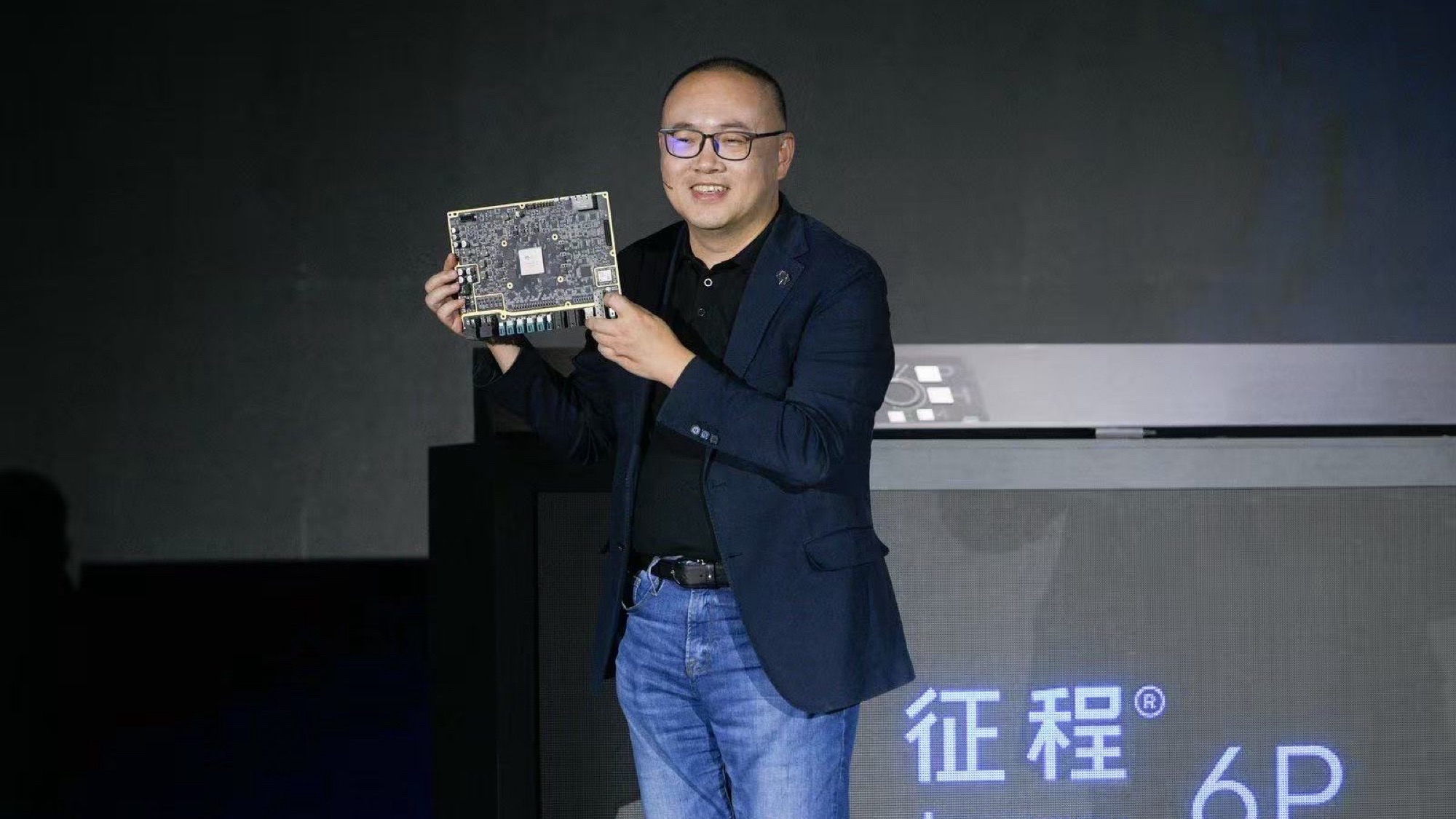In the tenth year of its establishment, Horizon’s founder and CEO, Yu Kai, released two significant announcements last night. The first was Horizon’s most powerful assisted driving chip to date, the Journey 6P, and the second was that the urban area assisted driving system HSD will be mass-produced this September, debuting with the Chery EXEED brand.
During the nearly 3-hour presentation, Yu Kai shared his entrepreneurial insights and discussed several “contrarian” views on assisted driving. As the leading company in this year’s assisted driving equality wave (with one out of every three smart cars equipped with Horizon), Yu Kai’s perspectives are steering the industry back to rational pragmatism from aggressive dissemination.
On the eve of last year’s Beijing Auto Show, Horizon released the Journey 6 series of assisted driving chips. Over the past year, the Journey 6E / 6M has been the first to be mass-produced and installed in vehicles, while the higher-positioned Journey 6P was officially unveiled last night. The key architecture of Horizon Journey 6P:
- AI performance of 560 TOPS, CPU performance of 410K DMIPS, GPU performance of 200G FLOPS;
- 4-core Nash architecture BPU;
- 18-core Arm Cortex A78AE architecture CPU;
- Supports 18-megapixel front-facing camera (currently 8 million is common in the industry);
- Image processing bandwidth of 5.3G pixel/s;
- 256-bit LPDDR5 memory with approximately 205 GB/s bandwidth;
- Integrated full-function MCU with 10K DMIPS ASIL-D performance;
- Memory access deterministic latency of 130 ns.
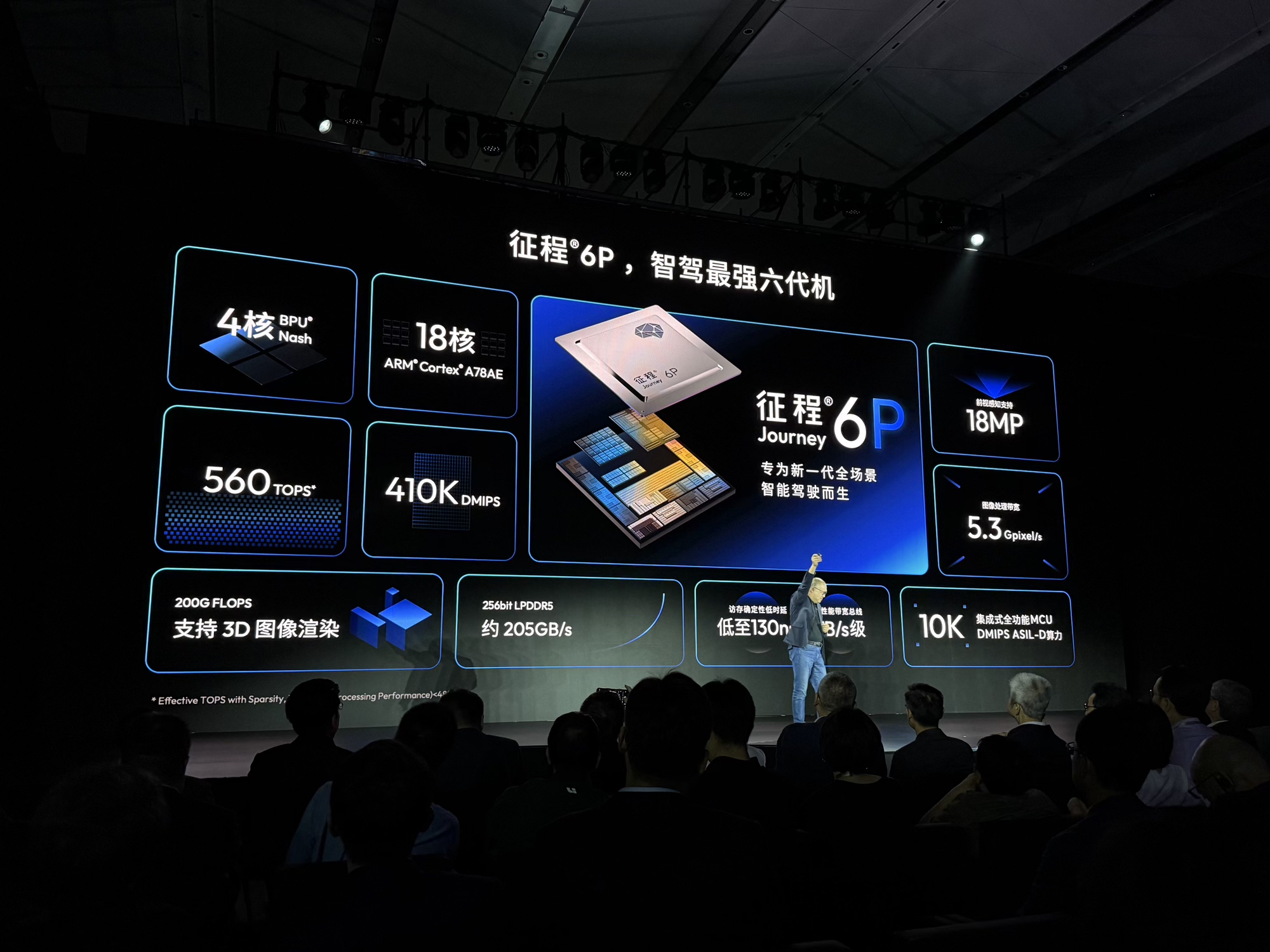
In terms of performance, when running Transformer networks, Journey 6P offers a significant improvement of 17 – 40 times in frames per second (FPS) compared to competitors, while also featuring a higher cost-effectiveness, with FPS/$ being 4 – 12 times that of competitors.
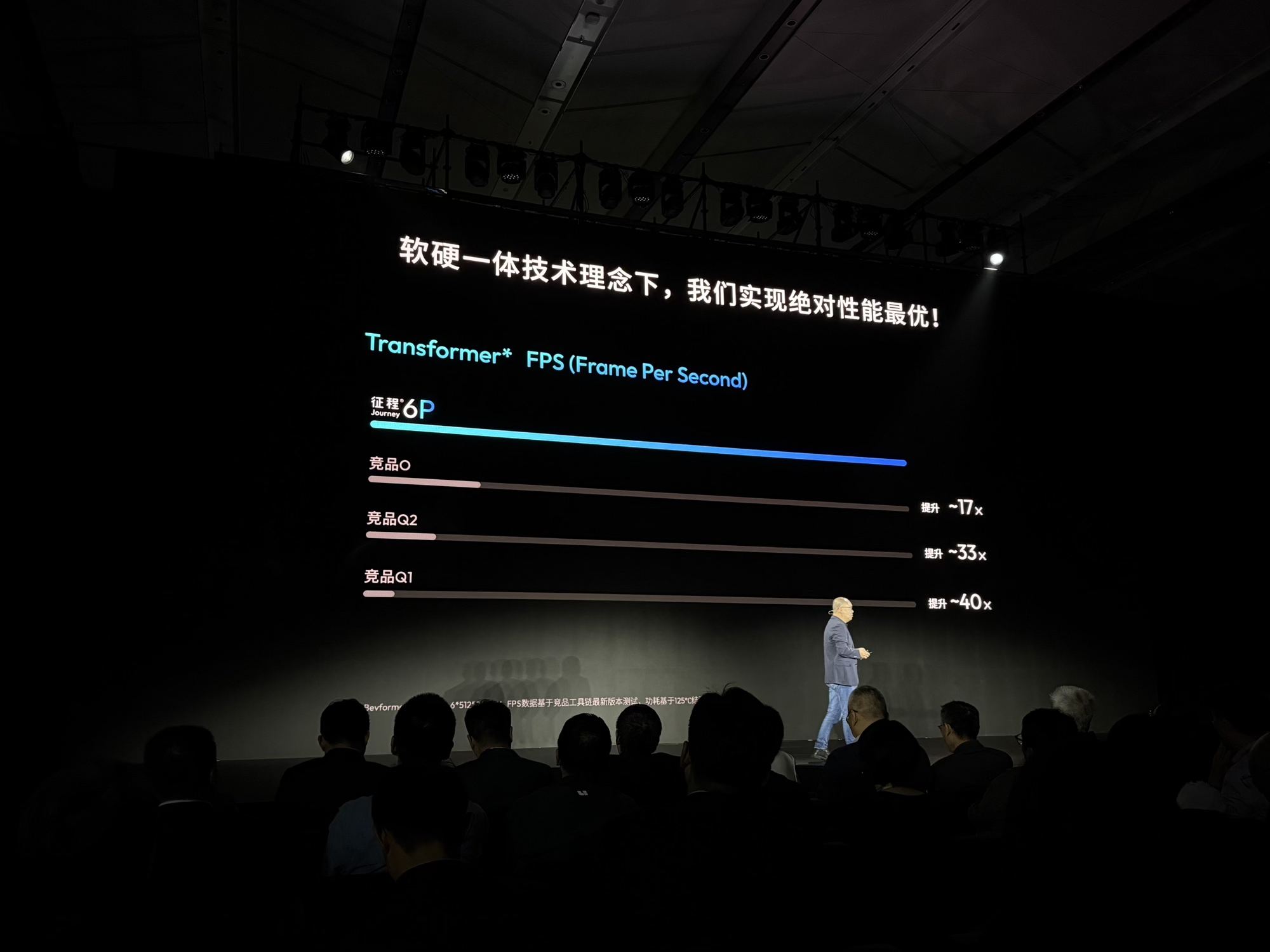
How do we understand the relationship between performance and cost?
Horizon provides the answer with the Horizon Cell “Clip System”, a set of combinable and pluggable domain controller reference designs. With dual Journey 6M-equipped domain controllers providing approximately 300 TOPS, enabling standard configuration for vehicles priced around 100,000 yuan; domain controllers with a single Journey 6P offering around 500 TOPS, making standard configuration possible for 150,000 yuan-level vehicles; and domain controllers with dual Journey 6P achieving approximately 1,000 TOPS, allowing standard configuration for 200,000 yuan-level vehicles.Here Lies the Secret to Equitable Assisted Driving.

When discussing the naming of Horizon’s urban assisted driving system, HSD, Kai Yu made a joke: “Before last night, we used to call it… never mind.”
Through numerous videos, Kai Yu hopes that HSD will be a city assisted driving system that is both human-like in experience and trustworthy to users. He laid out a formula: User Trust in Smart Driving = (Peace of Mind X Professionalism X Intimacy) / Exaggeration.
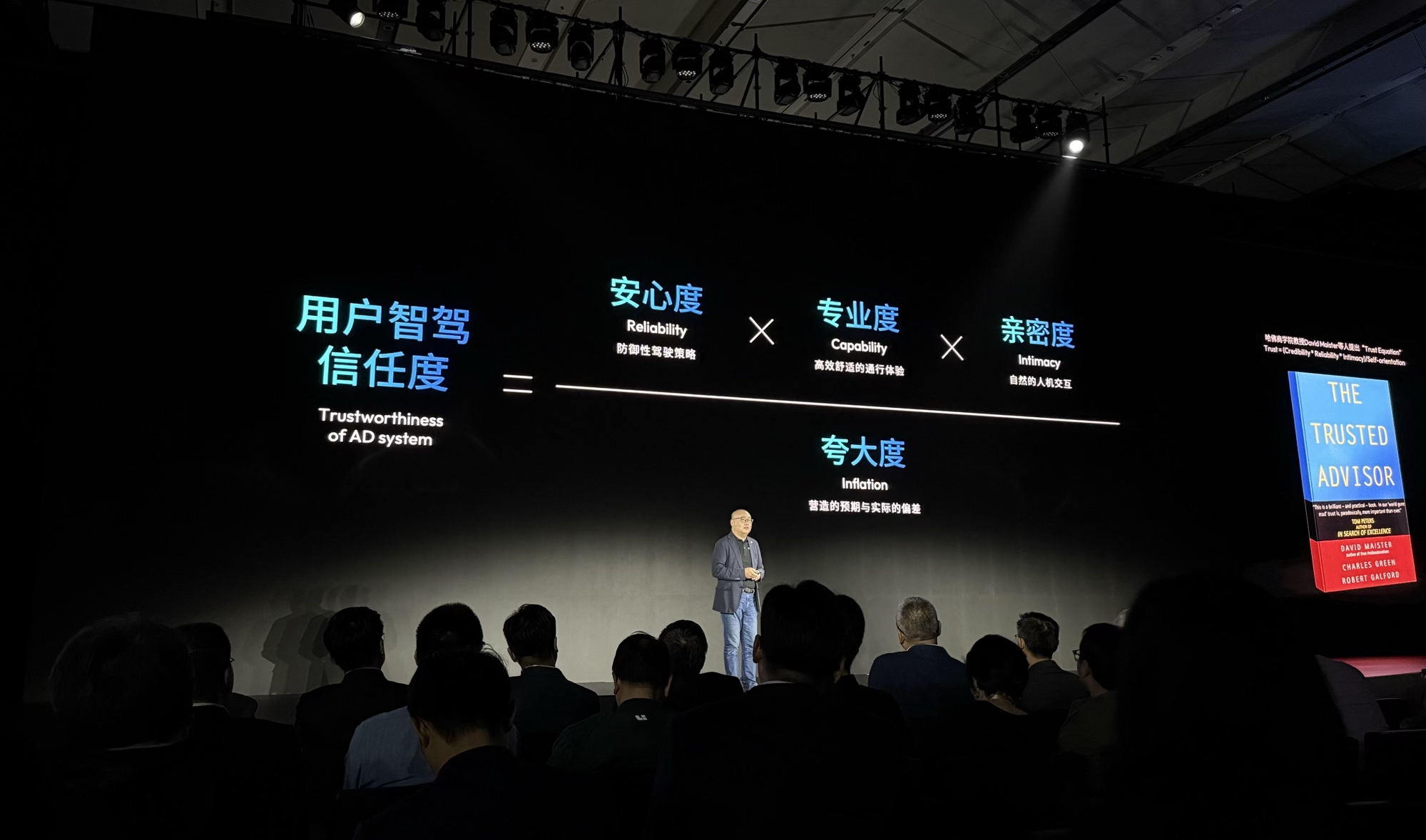
First, addressing peace of mind, Kai Yu stated: “If the urban assisted driving system experiences three panic takeovers within 10 kilometers, 80% of users will choose to abandon this feature, causing a collapse in trust.”
In urban driving, vehicles equipped with HSD can smoothly yield to pedestrians while maintaining efficiency; deftly handle road blind spots; and effectively navigate around non-standard construction zones.
Regarding professionalism, Kai Yu noted that current industry assistive driving solutions achieve 90% – 120% highway efficiency compared to human drivers, yet urban assisted driving only reaches 65% – 80%, significantly lower than humans, making it undesirable for commutes.
Yu exhibited the abilities of HSD-equipped vehicles in scenarios such as roundabouts, mixed traffic areas, three-point turns on narrow roads, and merging from side roads to main roads, alongside a comparison of urban driving efficiency with human drivers and the behavior of pets in cars.
On intimacy, Yu presented the HMI, an iF Award-winning human-machine interface that offers an authentic interaction experience.
The denominator of this formula is exaggeration. Yu expressed: “In speed, we must remain calm; in pessimism, we must be resolute. Action speaks louder than words — more doing, less talking.”
According to the plan, HSD will be integrated into Chery’s “Hawk Project” EXEED brand vehicles by September this year.
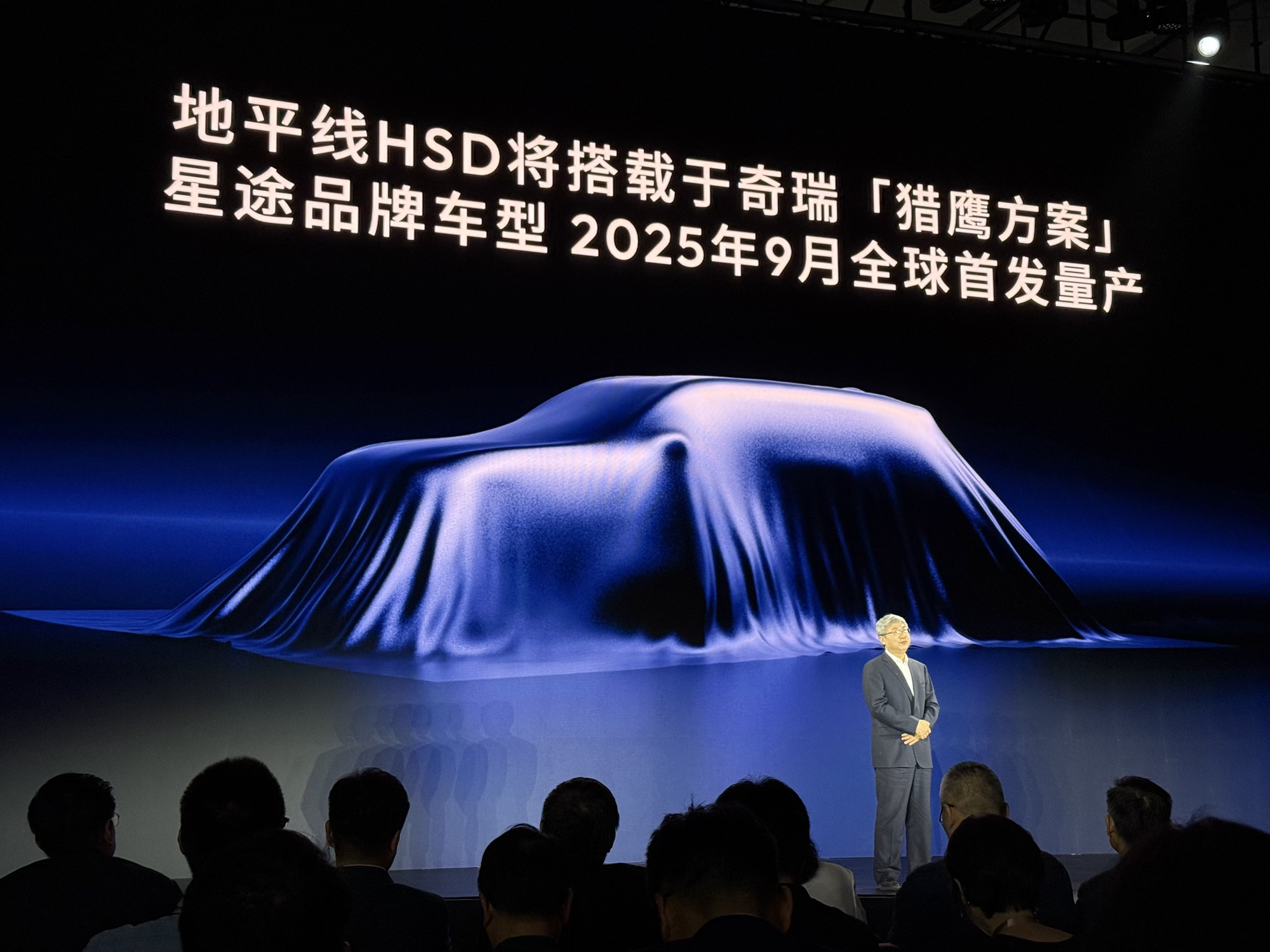
At last night’s launch, Chery Automobile Chairman Yin Tongyue was also present. He remarked: “For the past 20 years, Chery has thrived on engine technology. In the next 20 years, we will thrive on intelligence — or rather, on Yu Kai’s technology.”
Technological advances have not halted. At the launch, Yu also discussed future trends in assisted driving. This year, automakers are embracing L3 technology, so what defines L3?
Yu pointed out that some automakers currently have unclear ODD boundaries for L3, making it hardly usable for users. Conditions such as clear weather, good lighting, and distinct lane markings are vague definitions. Horizon envisions L3 as an L2 all-scenario assisted driving system, augmented with clear but limited L4 boundary capabilities.### How is a Clear ODD Boundary Defined? For example, the Fourth Ring in Beijing.
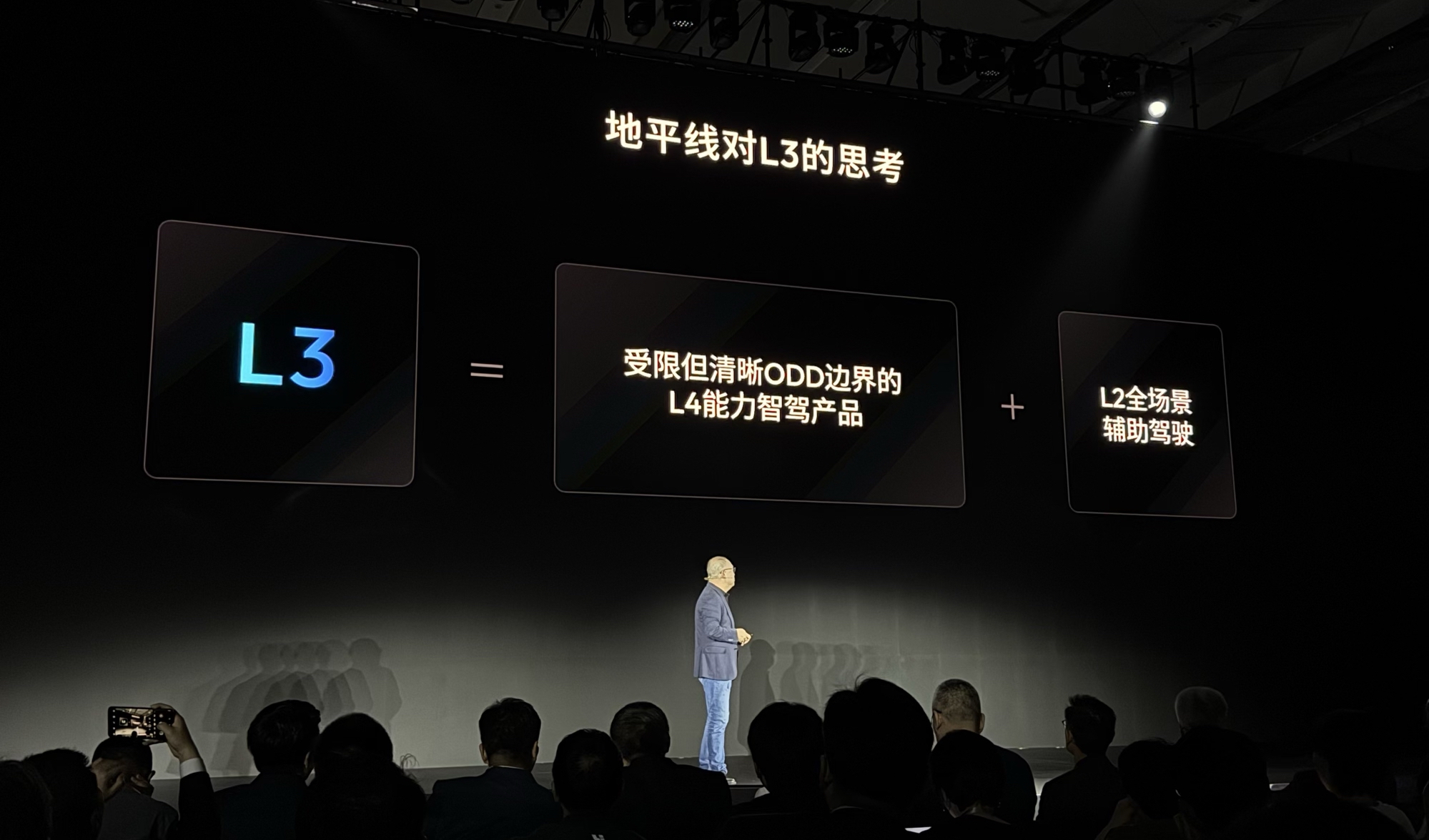
The path to achieving L3 by Horizon involves three steps: First, the mass deployment of vehicles equipped with L2 full-scenario assisted driving systems; Second, thorough verification using extensive real-world road data; Third, defining a clear ODD boundary based on substantial real vehicle data and integrating necessary system redundancies to demonstrate L4 capability.
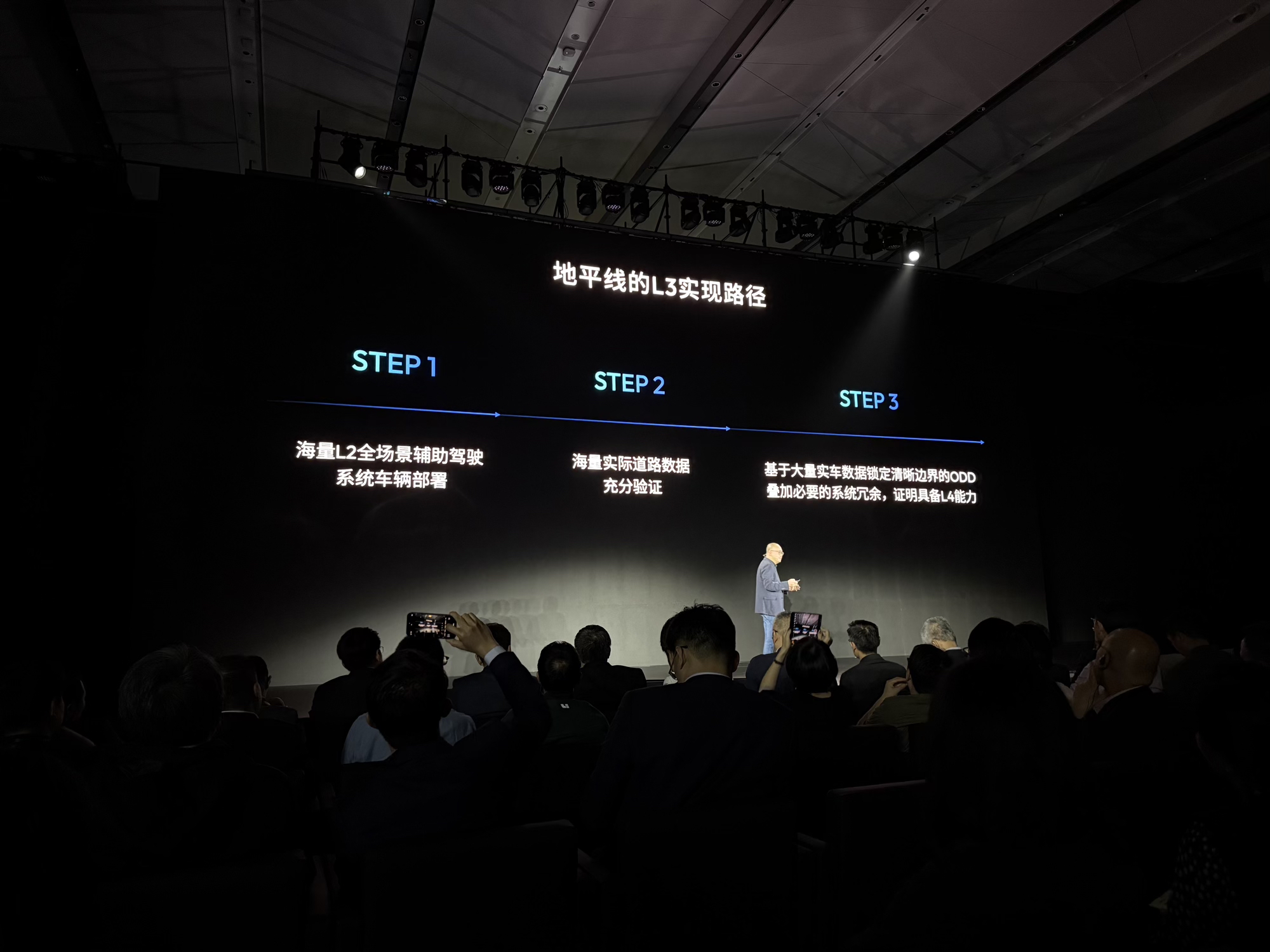
Yu Kai also provided a timeline: L3 with 500 – 1,000+ TOPS will be widely implemented by 2028, while L4 with over 2,000 TOPS is expected by 2030. By 2035, L5 level autonomous driving with 5,000+ TOPS will be realized.
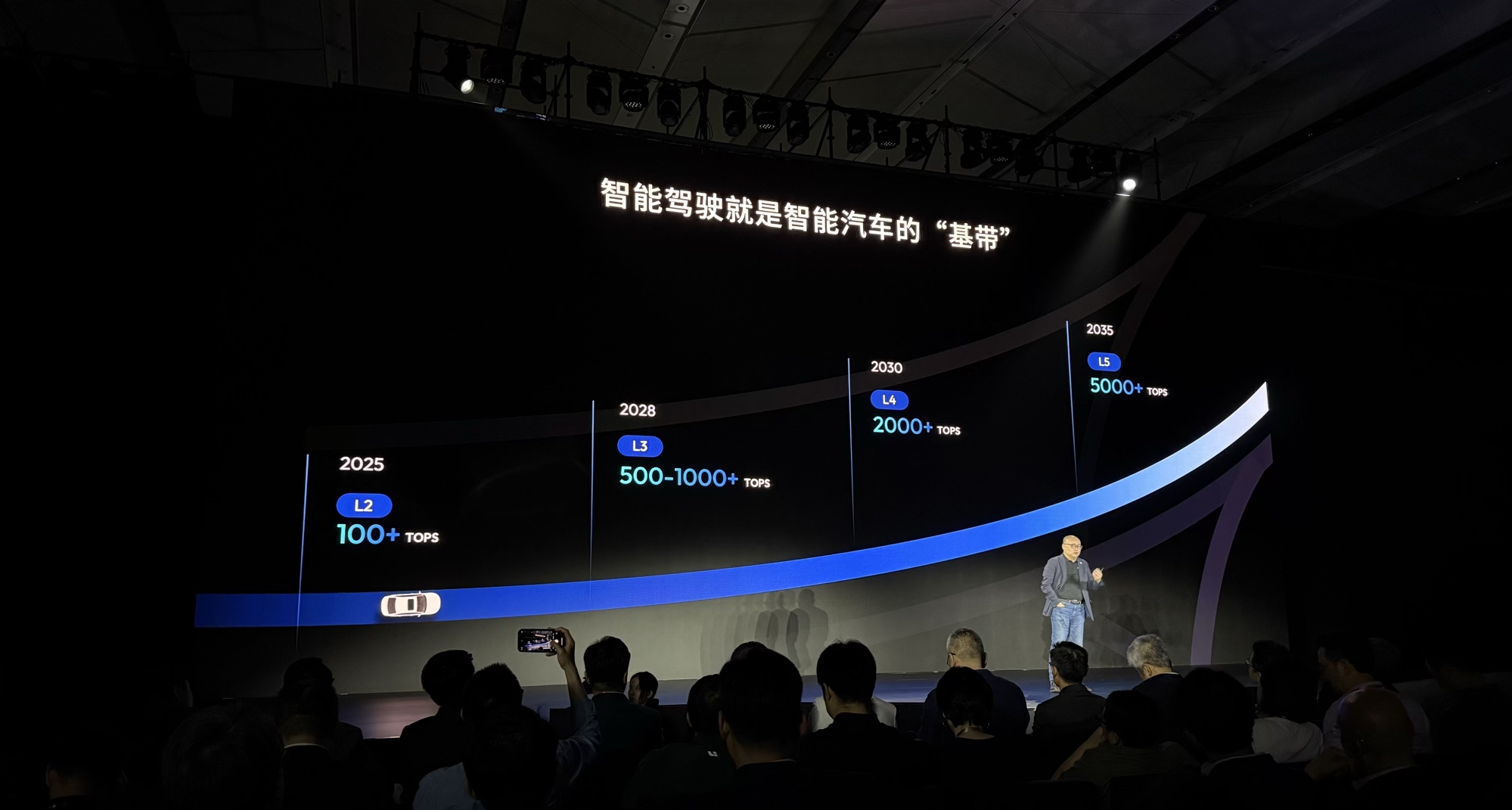
This morning, Garage 42 and several industry media outlets jointly interviewed Yu Kai, founder and CEO of Horizon. He provided detailed answers on several topics including last night’s release of the HSD Urban Assisted Driving, L3, and robotics. We have compiled the key information from the discussions.
Q: How has Horizon’s mission vision changed from 2015 to 2025? With the focus becoming sharper, how do you view the short-term and long-term business changes for Horizon, and what are your thoughts on this?
A: Yes, it has become more focused. I aim to dominate the smart driving sector in the next 3–5 years. The robotics business might be a bit premature in this timeframe; it may need at least another 5 years to mature. Current robotic vacuum cleaners are too simplistic. Humanoid robots might still be far from practical use, so I estimate maybe 5 years or more, 5–10 years from now. The plan is to have the automotive business explode in 3–5 years and potentially have the robotics business take off in 5–10 years. I think the automotive business could reach a market scale of billions of dollars within 3–5 years. I’m referring more to a conceptual imaginary number, implying that a turning point in autonomous driving is visible, whereas it hasn’t appeared for robotics yet.
Q: Since advanced intelligent driving is now a sensitive topic, what changes do you foresee in the industry? What impacts might there be?
A: Although we can’t discuss advanced levels, we can talk about higher levels of intelligent driving. This principle remains the same—strike high to hit low, strike fast to hit slow. I believe the trend towards L5 level autonomous driving won’t halt. However, norms are needed; it should be referred to as assisted driving. This kind of regulation benefits the industry. Over the years, various anxieties and competition have indeed led to some industry distortions. Returning to a normal track will not slow the industry’s development; instead, I believe it will accelerate it. Just like high-speed trains can reach 600 kilometers per hour because they have tracks; with regulated tracks, the train of autonomous driving technology can genuinely progress rapidly.Q: It’s not very clear from the user’s perspective; they don’t know how to choose. What are your thoughts?
A: I think it used to be like that, but now it might be increasingly less so. Previously, high-speed assisted driving made it challenging for users to experience autonomous driving. For example, when visiting a car dealership, people would be told they need to drive on the highway for 40 minutes to try it, which scares off 99% of potential buyers. So, in the past, autonomous driving was just a selling point written in brochures, but not something people could truly experience. However, with urban-assisted driving, they can actually use it right from the dealership or during daily commutes.
I believe that how well it functions has become crucial, akin to choosing a TV with picture-in-picture feature. If it’s there, good, if not, we won’t buy it, right? Yet even when it’s present, it might not be used. Now, urban-assisted driving is the real breakthrough, enabling people to engage with and experience this technology daily. Hence, the public will demand its performance, transcending mere marketing claims.
For users, they don’t care about computing power, but from a technical complexity perspective, more computing power usually means higher model complexity, and likely a better user experience. Computing power is important, but the public mainly cares about three aspects of assisted driving: safety, comfort, and efficiency.
Q: You mentioned yesterday that 99% of human data is not worth learning. Does this mean data is unimportant, or that we need a different solution?
A: Large models don’t imply data is unimportant, rather that human behavior isn’t. In assisted driving, 99% of drivers don’t drive well in terms of braking, turning, and lane changing comfort. Tesla, for example, uses its proprietary fleet with specially trained drivers, not ordinary users, combined with reinforcement learning for their platform.
In the AI era, the goal of AI products is to surpass human capabilities, not equate them. It’s not about being better or worse but approximating human thought and recommending accordingly; that’s the logic of AI products.
Q: Has Scaling Law not been effective yet? As we move towards higher computing power and more parameters, will diminishing returns become apparent?
A: Definitely, Scaling Law in autonomous driving is just beginning and hasn’t plateaued. Increasing computing power and model size is still showing continual improvement. I believe, over the next decade, autonomous driving will need ongoing increases in computing power, though there will eventually be a slowdown.
L3 requires high-quality, full-scenario assisted driving, which will slow progress somewhat post-completion, tackling complex corner cases with difficulty. Ultimately, I’m confident we will overcome these challenges.In the realm of mobile communications, akin to the mobile phone baseband, only a few companies excel. Navigating through urban high-rises, subways, and sprawling rural areas, while integrating diverse supplier base stations, to enable uninterrupted phone communication is immensely challenging. This closely resembles autonomous driving, where adapting to various scenarios with or without lane markings, or even off-road conditions, is crucial. Perfecting autonomous driving technology could lead to rapid advancements, yet achieving the leap from 90 to 100 percent efficiency proves exceedingly difficult.
Q: What is Horizon Robotics’ strategy in the robotics field?
A: We are laying the groundwork for the robotics era and believe the truly groundbreaking applications of robotics may not yet be apparent. Hence, we are committed to nurturing this ecosystem long-term, similar to NVIDIA’s early development of the CUDA ecosystem before its explosive applications were realized. From our perspective at Horizon Robotics, our goal is to establish our “Gaia” robot computing chip platform as the foremost choice for all robotic developments. This remains our current focus, while future breakthroughs in any company’s technology are unpredictable. We are setting the foundation in hopes that a sizable success will emerge from it. We don’t build robots; our firm commitment is to develop operating systems and chips, which I believe is the most strategic focus.
Q: What is the relationship between System 1 and System 2, and what approach will you take? Will you work on world modeling?
A: We do not equate VLM with System 2. We regard genuine interactive reinforcement learning games as true System 2. Integrating these large language models enhances the vehicle’s autonomous driving capabilities but does not equate to interactive games. Thus, for System 2, our primary focus is on reinforcement learning.
We are indeed working on world modeling. Our aesthetically advanced HMIs stem from feeding sensor inputs to generate dynamic and static models, all based on our world model.
The long-term technical architecture involves dual systems. However, the interactive reinforcement learning games will continuously enhance System 1, incorporating more systems. Novice drivers often deliberate, while experienced drivers act instinctively. When much of System 2 thinking becomes habitual, it transitions into System 1. Thus, over time, although these dual architectures will persist, System 2 elements will blend into System 1.
Q: Will there be a more aggressive version following HSD?
A: We do not advocate for aggressive advancements in autonomous driving. We believe autonomous driving should prioritize comfort, security, and reassurance for users, approaching design from a user-experience perspective rather than with aggression.
Q: The notion that 99% of human driving data is not worth learning—will this become an industry standard?
A: I argue that certain user data isn’t worth learning, whether for large models or assisted driving. For instance, with LI Auto, as some reports detail, only select, high-quality data is considered for learning. Similarly, reports on Tesla suggest that their data is meticulously curated from specialized fleets for training. Coupled with simulations towards the end of last year, this resembles the industry’s approach. I believe encouraging more deep-thinking and challenging mainstream ideas can unveil the correct path, rather than simplistic consensus which dulls the industry’s innovation.“`markdown
Q: How does Horizon assist OEMs and developers?
A: Engaging in AI computing for servers and data centers, catching up with CUDA’s ecosystem is exceedingly difficult. Currently, I don’t think any company can manage that, as NVIDIA caters to limitless possibilities with their server computing, making it hard to keep pace. Horizon’s strategy is to compete where there’s no competition.
We focus on autonomous driving and robotics, mainly dealing with perception, motion, and decision-making. In this relatively specialized field, we also focus our operators.
We’re taking the narrow path, but within this path, there could be vast opportunities. NVIDIA also took a similar approach back in the day. By entering autonomous driving, we discovered the vast future of robotics. There are numerous applications, from flying machines to household robots. This narrow path might unexpectedly lead to vast opportunities.
Many chip companies rushed in poorly prepared, failing to open the market due to their lack of a robust toolchain and software ecosystem. Thus, a chip company cannot survive on hardware ability alone without software capabilities.
Q: Are L4 companies closer to the ultimate goal of autonomous driving?
A: Their overall system cost is still too high, and their product starting points differ. Their system cost focuses on operations, while we think about how to make cars affordable for consumers. Our different starting points result in many different paths.
Q: When did Horizon and NIO start collaborating, and why does Firefly use Journey 5 instead of Journey 6?
A: The collaboration began early, in 2023, when Journey 5 was chosen because Journey 6 was not yet available.
Q: What are your thoughts on car manufacturers developing their chips?
A: These car company leaders are my good friends, and when they aim to develop their chips, I always encourage them and offer help. If they’re willing to endure the hardships of entrepreneurship, they must have grand dreams, aspiring to become the next Jobs or Elon Musk.
Without such dreams, it’s hard to endure the challenges of entrepreneurship. It’s commendable. But I see the industry’s endgame as identifying who can become the next Jobs or Elon Musk. There’s probably a 20% chance one may emerge, while the remaining 80% involves returning to industry collaboration and openness. This is evident in the smartphone and PC industries, where self-development is rare.
I care about the endgame, which creates vast markets needing suppliers like us. We just need to do our job well without trying to change others.
“`Q: What are the respective strengths and weaknesses of HSD compared to Huawei and Tesla in terms of technology?
A: I believe FSD is the highest level of mass-produced vehicle autonomous driving in the world. Huawei’s level is also impressive, and ours is quite remarkable too, making it hard to compare. Ultimately, I think it comes down to user experience, which isn’t complicated and doesn’t require professional evaluation. It’s simply about three indicators: safety, comfort, and efficient traffic flow. When these indicators are met, user word-of-mouth will naturally reflect the results clearly.
Q: How does Horizon focus on its business in autonomous driving and robotics, including financial and personnel investments?
A: I find it challenging to provide exact figures, but approximately 1/20 of the personnel are in the robotics field. Given the current state of robotics, it’s unrealistic to expect profits from them right now.
Q: How is Horizon planning its L3?
A: The foundation of L3 is sufficiently good urban driving assistance. I believe achieving this still requires effort. It’s crucial to have adequate deployment of urban driving assistance to collect operational statistics ensuring safety. This isn’t something to decide impulsively. Therefore, I’ve not been overly eager to push this, believing we should first perfect urban driving assistance.
Q: Horizon’s magazine system launched three versions. What about their mass production timelines, and why are there three versions?
A: From our perspective, we’d love only to sell the dual Journey 6P, but each car manufacturer has its understanding and positioning. I believe the industry’s trend will move towards standardization. Urban driving assistance will become standard in every vehicle. Within three years, it will be standard in 100,000 models, meaning both single and dual Journey 6P will be the norm. Nevertheless, dual Journey 6M offers cost advantages.
All AI systems follow a Scaling Law—the more products and larger the models, the better the performance. I believe consumers will eventually opt for high computing power. I often compare baseband to autonomous driving. It’s fascinating; when 3G first emerged, only high-end devices used it, while many low-end ones remained on 2G, with 3G as an option. But once 4G created smooth video streaming, everyone, including low-end devices, adopted it. Similarly, I foresee autonomous driving hitting a “4G moment” within two to three years, with urban driving assistance becoming standard once it’s sufficiently good.
Q: Horizon mentioned a software and hardware combination, does this imply moving from Tier 2 to Tier 1?
A: Horizon’s commercial essence hasn’t changed. Over the years, we’ve provided OEMs not just with chips but also extensive software toolchains and development tools. This versatility distinguishes Horizon from other autonomous driving chip companies, as deploying software over chips is vital.So, you need to help car manufacturers quickly deploy software, making chip companies that understand software extremely important. In the past, chip companies without software capabilities indeed faced difficulties. From a business model perspective, there is no fundamental change; we are still secondary suppliers. Otherwise, there wouldn’t have been so many primary suppliers at our place last night. I believe this division of labor is very clear. I think Horizon should focus on core technology development, which is platform-level research and advancement, rather than spending too much effort on adapting and testing specific car models.
I believe we should respect industry norms, doing what we do best and collaborating with partners for a win-win outcome.
Q: Do you think Horizon is late in launching city driving assistance? Other companies have been doing it for years.
I have only one standard: making users scream with delight. Everything else is just a consequence, not my goal, so creating products that excite users is our purpose. So, whether it’s early or late, I don’t know nor do I care. Anyway, there are no products that make users scream with delight, nor any cars selling well because of driving assistance; it seems almost none. Therefore, discussing early or late is irrelevant; our main concern is having a great product.
This article is a translation by AI of a Chinese report from 42HOW. If you have any questions about it, please email bd@42how.com.
